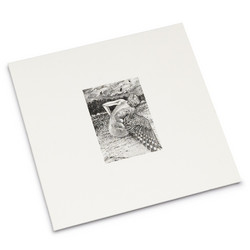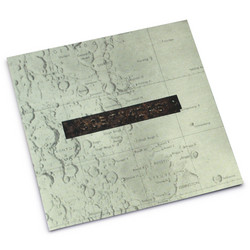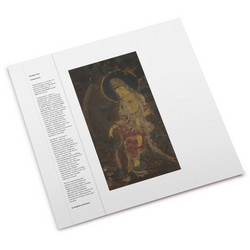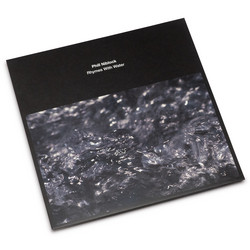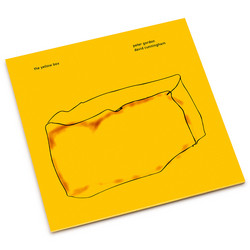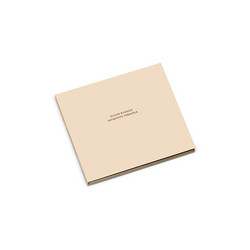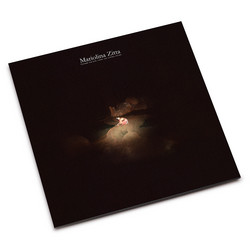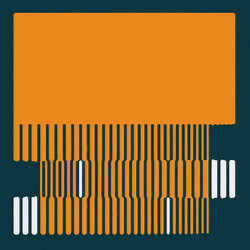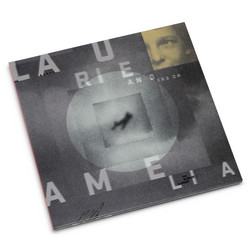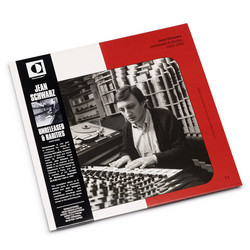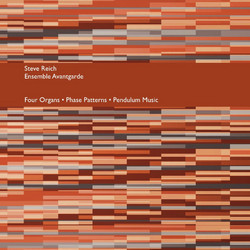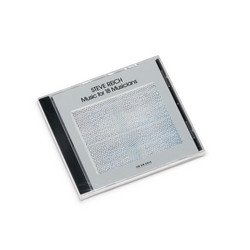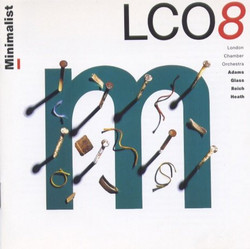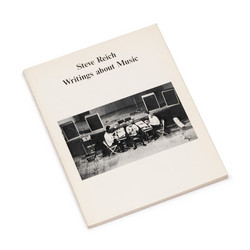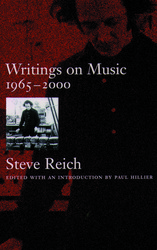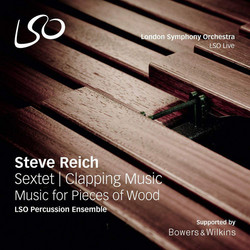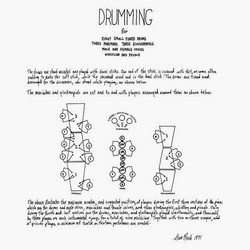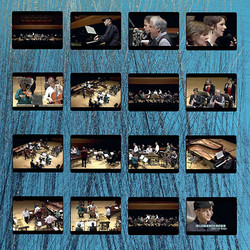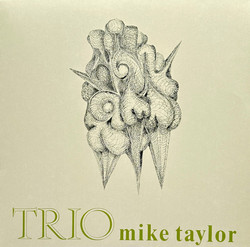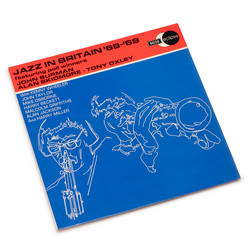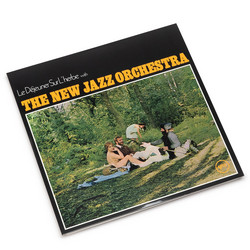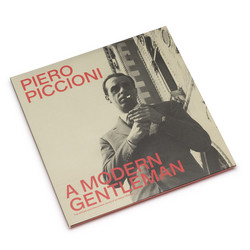** few copies back in stock** Milestone!! This three-LP set, originally released on Deutsche Grammophon in 1974 finally available again in a faithful replica limited edition, is arguably the pinnacle of minimalism. Along with Terry Riley's In C and perhaps Glass' early piano music, Drumming defined the essential component of this new form of music: a transparent process that could imperceptibly lead to bewildering complexity. Crucially, Steve Reich added an extra ingredient: rhythms derived from his studies of West African drumming, giving the work an inherent vitality sometimes missing from his contemporaries. Drumming is a 75-minute piece laid out in four sections, one apiece for small tuned drums (played with mallets), marimbas, and glockenspiels, ending with a combination of all three plus the addition of voices mimicking the percussion. Beginning with a single struck drum, notes are added little by little, apparently simply filling the voids between them but, almost before the listener realizes it, suddenly being heard as new rhythmic patterns themselves, taking on a miraculously shifting guise. One can virtually choose to hear any of a number of rhythms depending on how one organizes the sounds in one's head. Indeed, Reich allowed his musicians to "discover" various rhythms for themselves and accent them accordingly. The process is fairly similar in each section, the palette changing from the beautifully resonant drums to the luscious marimbas to glockenspiels, the massed character of which add an extra element: ringing overtones. In Drumming, Reich arrived at the perfect combination of intellectual rigor and corporeal sensuousness, neither side predominating, both in clear and glorious presence. Six Pianos applies approximately the same strategies to multiple keyboards to intriguing, if ultimately less successful, effect. Music for Mallet Instruments, Voices and Organ is a preliminary step down the path Reich would take in coming years, using longer melodic lines and a looser, more expansive rhythmic system. Very beautiful in and of itself, one can't help but think that the composer really made his major statement earlier, in Drumming, and that much of what would follow would be elaboration on those basic ideas. Still, the palpable sense of excitement on the part of the amazing musicians involved (interestingly enough, including the British composer Cornelius Cardew) is impossible to duplicate and Reich fans owe it to themselves to search out the original. This is a monumentally profound and important recording.
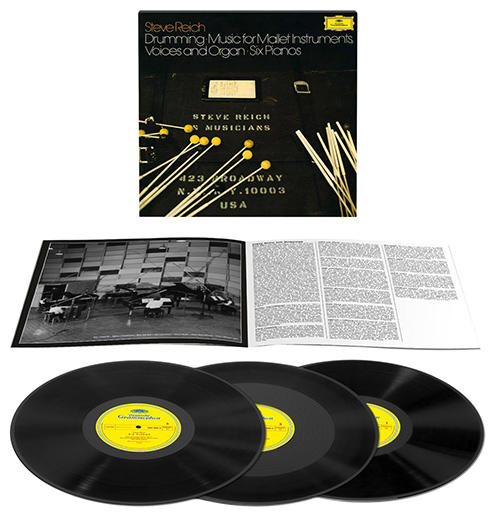
In the summer 1970 Steve Reich went to Ghana to study drumming. With a travel grant from the Special Projects division of the Institute of International Education, he made his way to Accra in order to study with Gideon Alorworye, the resident master drummer of the Ghana Dance Ensemble. Due to illness he returned from only after five weeks. He spent the following year almost exclusively on the ensemble piece called Drumming. At first glance, Drumming appears to draw on Reich’s non-western musical influences more than any other of his compositions to date. The ensemble of instrumentalists sharing their time between drums, mallet instruments and singing testifies to the composer’s attraction African traditions; as does the 12/8 rhythmic cell– reminiscent of an African bell pattern–that accounts for the entire work’s material. However, listening to Steve Reich’s Drumming with an ear that is thirsty for African polyrhythmics is the recipe for misunderstanding and disappointment. The sort of strict polyrhythmics that is found throughout central and west African music is not at all the point of this piece of music. There is a drastic disparity between the complexity of the rhythmic material in traditional African music and the single rhythmic cell present in Drumming. Furthermore, the multi-leveled construction of African polyrhythmics often acts as a vehicle for the master drummer to flaunt his command over the pulse: with great ease, he is able to play just a few of milliseconds ahead of the bell pattern, or ever so slightly behind the low drum. 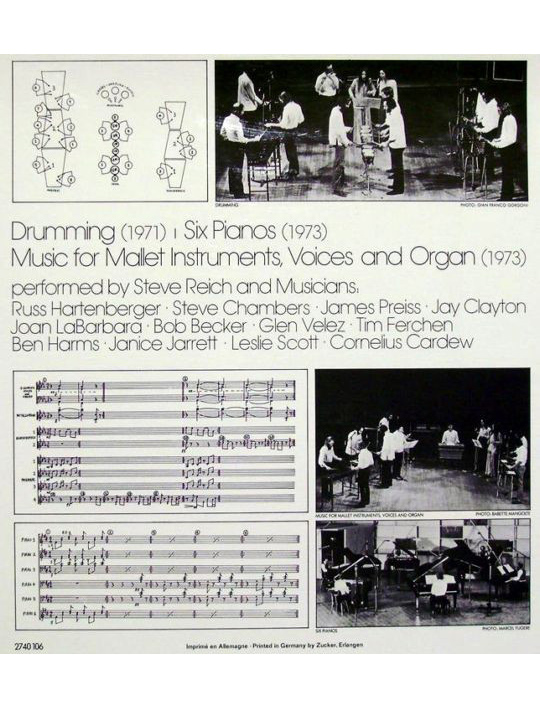
This form of interaction is entirely absent from Drumming. The comparison begs the question: what did Reich learn by going to Ghana?
